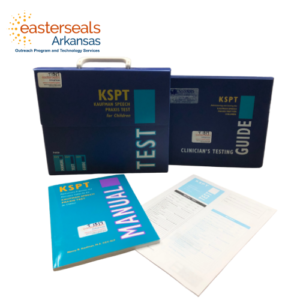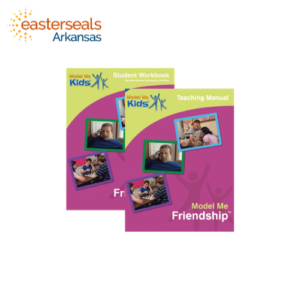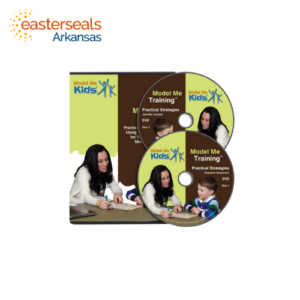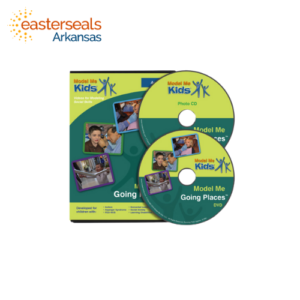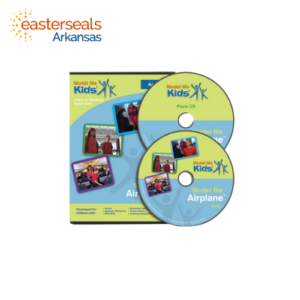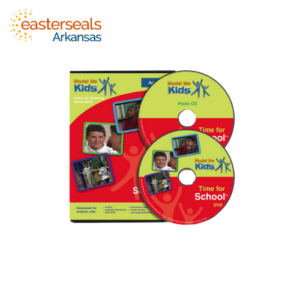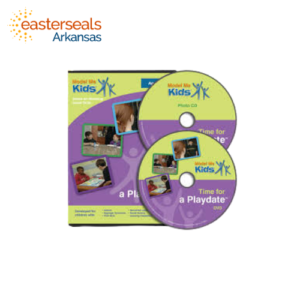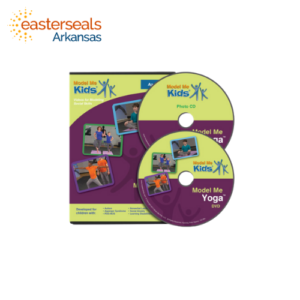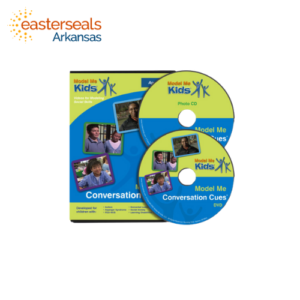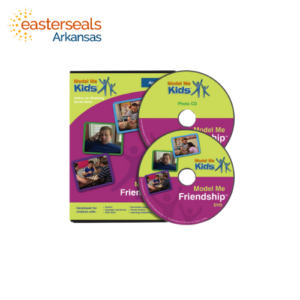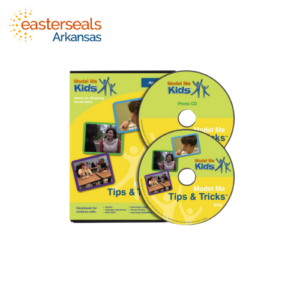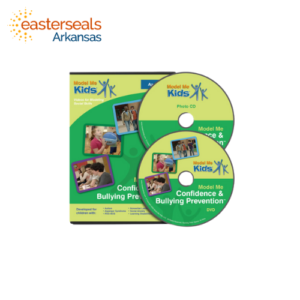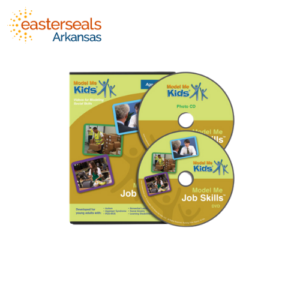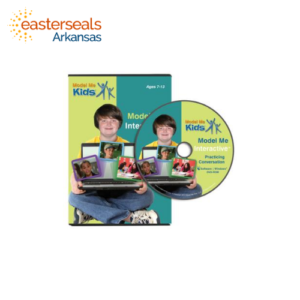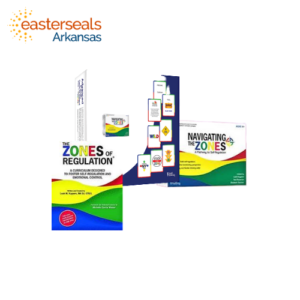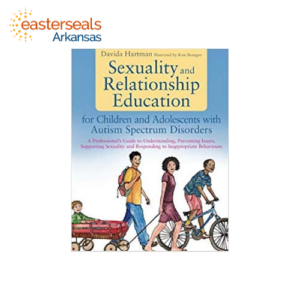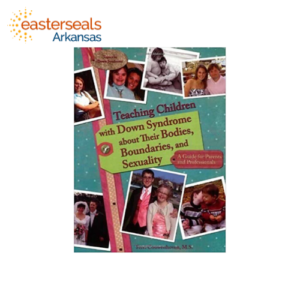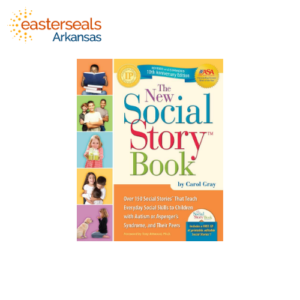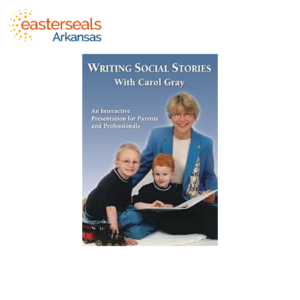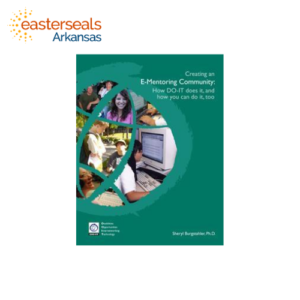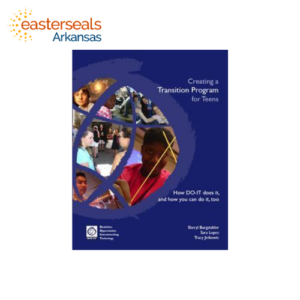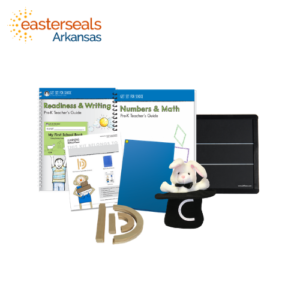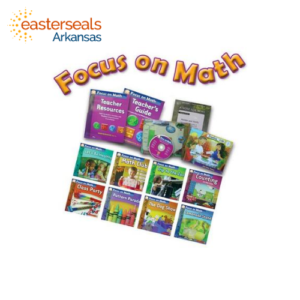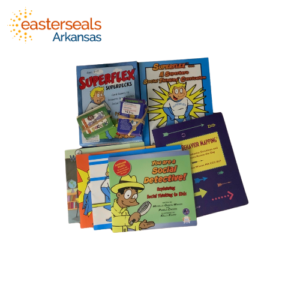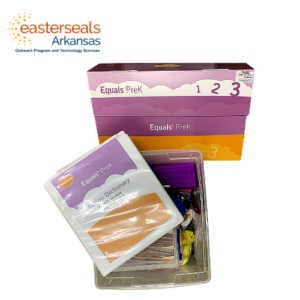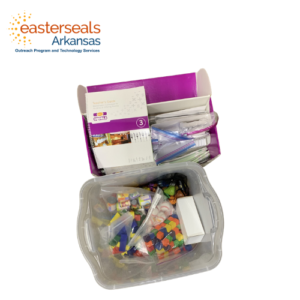-
The Kaufman Speech Praxis Test (KSPT) is a norm-referenced, diagnostic test assisting in the identification and treatment of childhood apraxia of speech. Easy to administer and score, KSPT measures a child's imitative responses to the clinician, identifies where the speech system is breaking down, and points to a systematic course of treatment. Breakdowns in KSPT match the levels of treatment in the K-SLP Treatment Kits, allowing for a seamless transition to therapy. Ages: 2;0 – 5;11. Admin time: 5-15 minutes.
-
Model Me Kids Teaching Manuals are a complement to its video modeling videos and help extend the lessons taught in the videos. These resources help teach social skills at home, in a classroom, social skills group, or other teaching setting
-
This DVD examines video modeling as an evidence-based method of improving social skills in children with autism spectrum disorder (ASD). Children with ASD often have social skills deficits that interfere with success. Video modeling has been found to be an efficient and effective method of teaching social skills to children with ASD. We address how to implement a video modeling program, pairing video modeling with other social skills training approaches, and strategies for generalization of skills.
-
The Model Me Going Places™ video features children, ages 2-8, involved in activities in the community. It is designed to familiarize children with locations that may be challenging, and to help teach appropriate behavior in these locations through peer modeling. Each scene lasts between 2-4 minutes, depending on the chapter. At the end of each chapter is a storyboard summarizing the locations shown. Recommended for ages 2-8
-
The Model Me Faces & Emotions™ video presents a variety of faces and emotions featuring children ages 2-8. Each scene lasts between 1-2 minutes, depending on the chapter. At the end of each chapter is a storyboard summarizing the emotion shown. Each emotion is demonstrated in more than one situation and across environments. This is useful to children with Autism because it helps promote generalization. Recommended for ages 2-8
-
The Model Me Airplane™ video presents the essential elements of air travel. Follow Owen as he goes through the airport, security, and boarding. Then join him on the plane as he listens to the flight attendant, buckles his seatbelt, and enjoys the plane ride.Recommended for ages 3-14
-
The Time for School™ video presents social skills in the context of school. It features elementary school-aged children demonstrating appropriate social skills in the classroom, library, on the playground, and in the hallway. Each scene lasts between 30 seconds and 3 minutes, depending on the chapter. At the end of each chapter is a storyboard summarizing the rules taught.The video is hosted by a young boy, who narrates each scene. The visual is combined with narration and graphics that help explain the particular rule. Each social skill is demonstrated in more than one situation and across environments. This is useful to children with Autism because it helps with generalization of the skill taught. Recommended for ages 5-12
-
The Time for a Playdate™ video presents social skills in the context of several playdates. It features elementary school-aged children demonstrating appropriate social skills on a playdate. Each scene lasts between 30 seconds and 3 minutes, depending on the chapter. At the end of each chapter is a storyboard summarizing the rules taught. The video is hosted by the young children in the video, who narrate each scene. The visual is combined with narration and graphics that help explain the particular rule. Each social skill is demonstrated in more than one situation and across environments. This is useful to children with Autism because it helps with generalization of the skill taught.Recommended for ages 5-12
-
The The I Can Do It!™ video presents social skills in the context of challenging circumstances. It features elementary school-aged children demonstrating appropriate behavior in a variety of difficult situations. Each scene lasts between 30 seconds and 3 minutes, depending on the chapter. At the end of each chapter is a storyboard summarizing the rules taught.The video is hosted by the young children in the video, who narrate each scene. The visual is combined with narration and graphics that help explain the particular rule. Each social skill is demonstrated in more than one situation and across environments. This is useful to children with Autism because it helps with generalization of the skill taught. Recommended for ages 5-12
-
The Model Me Yoga™ video leads children through yoga sequences for breath, movement, and self-awareness. No yoga experience necessary! Designed for children with Autism but appropriate for all kids! Each sequence runs approximately 10-15 minutes, so it can be used as a short break or strung together with other segments for a longer yoga class. The sequences are first presented with visual cues and background music to explain the poses. In the second version, the same sequences are offered without the visual cues or music background as an option. Each pose is modeled by a child and explained by the yoga teacher. The video includes partner yoga and chair yoga sequences. Model Me Kids, LLC is a Yoga Alliance Registered Children's Yoga School.Recommended for ages 7-15
-
Copy 1 of 2 The Model Me Conversation Cues™ video features middle and high school-aged children demonstrating social skills at school and in the community. Each scene lasts between 30 seconds and 3 minutes, depending on the chapter. At the end of each chapter is a storyboard summarizing the rules taught. Hosted by teenagers from the video who narrate each scene. The visual is combined with narration and graphics that help explain the particular rule. Each conversation skill is demonstrated in more than one situation and across environments. This is useful to children with Autism because it helps with generalization of the skill taught. Recommended for ages 9-17
-
Copy 2 of 2 The Model Me Conversation Cues™ video features middle and high school-aged children demonstrating social skills at school and in the community. Each scene lasts between 30 seconds and 3 minutes, depending on the chapter. At the end of each chapter is a storyboard summarizing the rules taught. Hosted by teenagers from the video who narrate each scene. The visual is combined with narration and graphics that help explain the particular rule. Each conversation skill is demonstrated in more than one situation and across environments. This is useful to children with Autism because it helps with generalization of the skill taught. Recommended for ages 9-17
-
The Model Me Friendship™ video presents social skills needed to develop and maintain friendship. It features teen-aged children demonstrating appropriate social skills at school, playing on sports teams, eating at a restaurant, and in other settings. Each scene lasts between 30 seconds and 3 minutes, depending on the chapter. At the end of each chapter is a storyboard summarizing the rules taught. The video is hosted by the children in the video, who narrate each scene. The visual is combined with narration and graphics that help explain the particular rule. Each social skill is demonstrated in more than one situation and across environments. This is useful to children with Autism because it helps with generalization of the skill taught.Recommended for ages 9-17
-
The Model Me Tips & Tricks™ video features upper elementary, middle, and high school-aged children demonstrating social skills at school and in the community. Each scene lasts between 30 seconds and 3 minutes, depending on the chapter. The visual is combined with narration and graphics that help explain the particular rule. At the end of each chapter is a storyboard summarizing the rules taught.Hosted by children from the video, who narrate each scene. Each social skill is demonstrated in more than one situation and across environments. This is useful to children with Autism because it helps with generalization of the skill taught. Recommended for ages 9-17
-
The Model Me Organization & Motivation™ video presents skills related to organization and self-motivation. It features teen-aged children demonstrating how to get organized and stay motivated. Each scene lasts between 30 seconds and 3 minutes, depending on the chapter. At the end of each chapter is a storyboard summarizing the rules taught.The video is hosted by the children in the video, who narrate each scene. The visual is combined with narration and graphics that help explain the particular rule. Each skill is demonstrated in more than one situation and across environments. This is useful to children with Autism because it helps with generalization of the skill taught. Graphics and music are used to make the video appealing to children with Autism.Recommended for ages 9-17
-
Model Me Confidence & Bullying Prevention™ provides children with Autism a teaching tool for preventing bullying and building self-esteem. The video is hosted by children from the video, who narrate each scene. The visual is combined with narration and graphics that help explain the particular rule. Each skill is demonstrated in more than one situation and across environments. This is useful to children with Autism because it helps with generalization of the skill taught. Recommended for Ages 9-17.
-
The Model Me Job Skills™ video models social skills helpful for gaining and maintaining employment. The video is hosted by the young adults in the video, who narrate each scene. The visual is combined with narration and graphics that help explain the particular rule. Each social skill is demonstrated in more than one situation and across environments. This is useful to individuals with Autism because it helps with generalization of the skill taught. Recommended for ages 15-21
-
Model Me Interactive™: Practicing Conversation For Ages 7-13 | Developed for children with Autism, Asperger Syndrome, and Developmental Delays. For a laptop with webcam. Model Me Interactive™: Practicing Conversation combines video modeling teaching tools with the interactive capability of software. First, video models a conversation between children. Then, the student practices the conversation using a webcam. The practice conversation is recorded and a feedback area allows teachers to comment on and grade a student's recordings. Ideal for professionals including teachers, therapists, and speech language pathologists.
-
Model Me Movement™: Balance, Core, & Calming is a video of short, easy-to-follow movement activities developed by Occupational Therapist Dr. Fabiane Curro. The video is designed to improve balance, increase core strength, and promote self-calming. The DVD contains six 8-11 minute movement segments each modeled by a child and guided by an adult. The activities are designed to target skills that help with coordination, body awareness, self-regulation, and promote an overall feeling of physical well-being.Recommended for ages 9-17
-
The Adult Facilitator and participants need to be familiar with the core concepts and vocabulary taught in The Zones of Regulation curriculum to use this game. Navigating The Zones is not designed to be a stand-alone teaching tool. The game is smaller, lighter, and more durable! The board is made of a strong mouse-like material to withstand heavy use.
-
Children and adolescents with Autism Spectrum Disorders (ASD) require specialized teaching strategies when learning about puberty, sexuality and relationships. This professional resource offers practical teaching advice geared towards the needs of young people on the autism spectrum. Beginning with information on good practice, policy, teaching methods and recent research, the book then divides into key sex education topics that assist professionals in developing their own individualized and developmentally appropriate curricula. Covering issues of gender, public and private, puberty, hygiene, emotions, sex and more, each topic provides an overview of the difficulties that children with autism might experience, discussion and activity ideas and photocopiable resources including instructional stories, checklists and illustrations. The final section demonstrates how to respond to ongoing patterns of inappropriate behaviour and put together a behaviour plan. Aiming to explain and support the child's developing sexuality while also addressing crucial issues of safety, this book is a much-needed teaching manual for all professionals working with children and young adults with autism including educators in mainstream and special education, psychologists, therapists and social workers.
-
Parents of children with Down syndrome and other intellectual disabilities are accustomed to paying close attention to their child's physical, cognitive, and emotional development. This proactive approach should also include their child's sexual development, which for many parents may not seem as obvious or urgent, especially to those with young children. Drawing on her unique background as both a sexual educator and mother of a child with Down syndrome, the author blends factual information and practical ideas for teaching children with Down syndrome about their bodies, puberty, and sexuality. This book gives parents the confidence to speak comfortably about these sometimes difficult subjects.
-
This accessible and positive resource helps parents and carers teach girls and young women with autism or related conditions about masturbation. It covers when and where it is appropriate and helps to establish boundaries surrounding privacy more generally. With simple but explicit illustrations, this book provides the perfect platform to talk about sexuality with girls and young women with autism or related conditions.
-
Since the early 90s, Carol Gray's world-famous Social Stories have helped thousands of children with autism spectrum disorders. This 10th Anniversary edition of her best-selling book offers the ready-to-use stories that parents and educators have depended on for years, but now features over 25 additional Social Stories, groundbreaking new strategies for creating custom stories, and a modern design complete with full-color photos. Developed through years of experience, these strategically written stories explain social situations in a way children with autism understand, while teaching the social skills children need to be successful at home, at school, and in the community.
-
This is an actual "Carol Gray Social Stories Workshop." In this three-hour presentation, Carol explains the genesis of her concept of social stories and leads the audience through exercises so, by the end of the video, you can easily write your own social stories. The accompanying handout booklet offers an outline of the presentation and statements and illustrations from Carol Gray's The New Social Story Book Illustrated Edition. The booklet is helpful while watching the video.
-
This book explores positive internal characteristics and external factors that contribute to success--personally, socially, spiritually, academically, and professionally. These factors can be used to provoke thought and promote interaction between teens and caring adults. In this book you will not find the stories of movie stars, international leaders, or other celebrities. Although the content is based on personal experiences of successful people with disabilities, all of the people represented here would not be considered super-achievers in all areas of their lives. You'll hear the stories of everyday people striving for the best life has to offer. This book highlights advice from people who confront barriers as challenges rather than deterrents and who find insight and humor during trying times. It shares some of the attitudes, skills, and strategies that have contributed to the success of people with a wide range of disabilities, abilities, experiences, and personalities. The experts who provide the major content for this book share their dreams, goals, challenges, successes, and frustrations. They tell about their experiences and give advice about how to successfully transition from high school to college, careers, and independent living. Perhaps their stories will provide inspiration as you help those around you define and achieve success for themselves.
-
Do you want to begin or enhance a program to help young people successfully transition to college and careers? Do you want to reduce preparation time by starting with materials and forms that have been created by a successful program? This book was written for you! It can help you create summer study, work-based learning, and e-mentoring programs for youth. Key considerations are highlighted to help you get started in developing programs that include computer technology access, peer and mentor support, college preparation activities, and work-based learning. Organizational details shared in this book have been implemented for more than fourteen years at the University of Washington in Seattle. Applying these practices can promote the development of self-determination and technology skills that contribute to success in college, careers, and independent living. Chapter One provides an overview of research that supports DO-IT practices. The chapters that follow share how DO-IT employs evidence-based practices in a cohesive set of programs and activities for students who have disabilities. Within those chapters you will see how
-
This boxed curriculum contains teacher guides, student workbooks, cards, music, and supplemental materials for teaching handwriting to students from pre-k to 4th grade.
-
Instructors who use Differential Reinforcement Systems will find these CDs essential. Pop a CD into your CD player, select the track according to the interval you need, and repeat the track for a continuous reminder to catch your students “being good!” CD #1 has 1, 2, 3, and 5-minute intervals. CD #2 has 7 and 10-minute intervals. CD #3 has 15-minute intervals. Each track plays a distinct tone so that you can play more than one CD at a time for students needing different intervals and recognize which interval is sounding. Each tone is activated on a randomized, variable schedule (the three-minute tone sounds on average every three minutes). These tones also are a great tool for instructors who are teaching children to monitor their own behavior. (set of 3 CDs)
-
Science curriculum ***This product has been discontinued by the manufacturer.
-
Math curriculum. ***This product has been discontinued by the manufacturer.
-
Looking for an engaging way to teach social awareness and self-regulation? Superflex, to the rescue! Kids around the world are having fun learning strategies and practicing new skills to boost their “Superflex powers,” so they don’t realize they’re improving their self-regulation and flexible-thinking abilities!
-
The Equals Pre-K Math curriculum is designed for students with disabilities currently in a preschool setting with special education services. With Equals Pre-K Math, students, including students with significant and intellectual disabilities, learn readiness math as active learners. Equals Pre-K features thoughtfully ordered and connected lesson objectives, learned skills and vocabulary connected to future lessons, and assessment administered in play-based/center-based format. The curriculum is aligned to state preschool standards and guidelines.This Product Includes:
-
Felt and plastic choice boards that can be used with PECS pictures, vocabulary cards, visual choices, etc.

